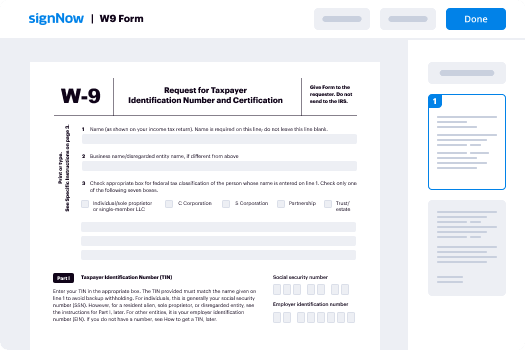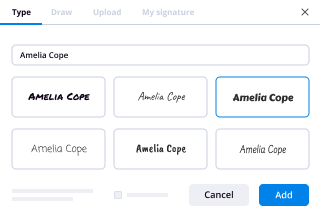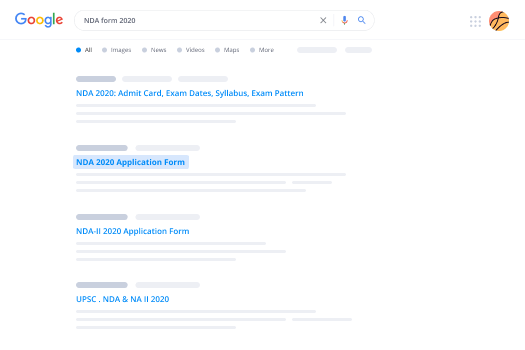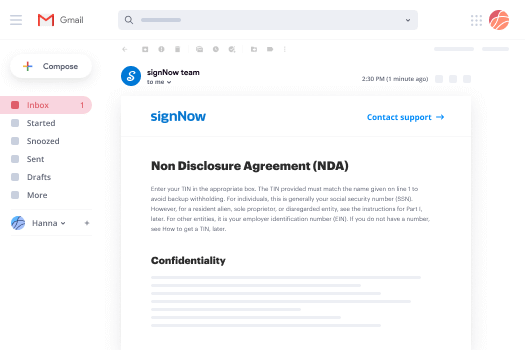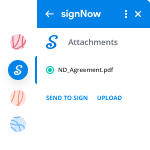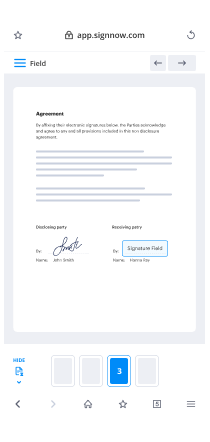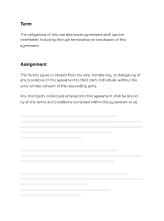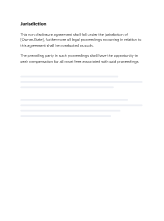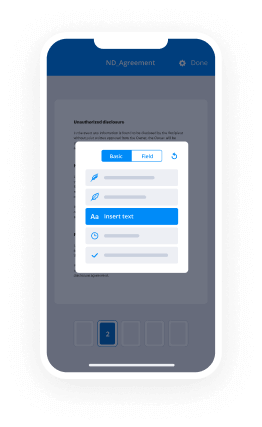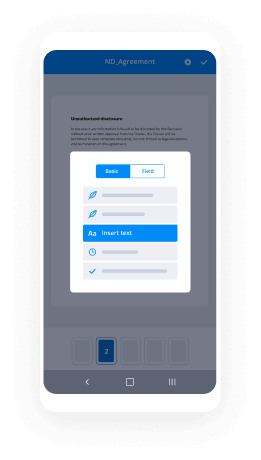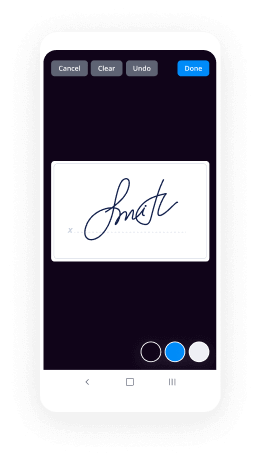Explore Your Digital Signature – Questions Answered: Digital Signature Versus Electronic Signature
- Quick to start
- Easy-to-use
- 24/7 support
Simplified document journeys for small teams and individuals




We spread the word about digital transformation
Why choose airSlate SignNow
-
Free 7-day trial. Choose the plan you need and try it risk-free.
-
Honest pricing for full-featured plans. airSlate SignNow offers subscription plans with no overages or hidden fees at renewal.
-
Enterprise-grade security. airSlate SignNow helps you comply with global security standards.







Quick-start guide on how to use digital signature versus electronic signature feature
Is your organization ready to cut inefficiencies by about three-quarters or more? With airSlate SignNow eSignature, weeks of contract approval become days, and hours of signature collection become minutes. You won't need to learn everything from the ground up due to the clear interface and step-by-step guides.
Follow the steps below to use the digital signature versus electronic signature functionality within a few minutes:
- Launch your browser and access signnow.com.
- Sign up for a free trial run or log in with your electronic mail or Google/Facebook credentials.
- Click User Avatar -> My Account at the top-right area of the page.
- Customize your User Profile by adding personal information and adjusting configurations.
- Create and manage your Default Signature(s).
- Go back to the dashboard page.
- Hover over the Upload and Create button and choose the appropriate option.
- Click the Prepare and Send key next to the document's title.
- Type the name and email address of all signers in the pop-up window that opens.
- Use the Start adding fields menu to begin to edit file and self sign them.
- Click SAVE AND INVITE when completed.
- Continue to fine-tune your eSignature workflow using extra features.
It couldn't be simpler to use the digital signature versus electronic signature feature. It's accessible on your mobile phones as well. Install the airSlate SignNow application for iOS or Android and run your customized eSignature workflows even while on the run. Skip printing and scanning, time-consuming filing, and expensive document shipping.
How it works
Rate your experience
What is the digital signature versus electronic signature
A digital signature is a specific type of electronic signature that uses cryptographic techniques to provide a higher level of security and authenticity. It ensures that the signer is who they claim to be and that the document has not been altered after signing. In contrast, an electronic signature encompasses a broader range of methods for signing documents electronically, including scanned images of handwritten signatures, typed names, or even a simple click to agree. Understanding the distinction is crucial for businesses navigating legal and compliance requirements in the United States.
How to use the digital signature versus electronic signature
Using a digital signature involves a few steps that ensure both security and compliance. First, the signer must obtain a digital certificate from a trusted certificate authority. This certificate is then used to create the digital signature, which is applied to the document. For electronic signatures, users can utilize platforms like airSlate SignNow to upload their documents, add their signature using various methods (such as drawing, typing, or uploading an image), and send them for signature. Both methods streamline the signing process, but digital signatures offer enhanced security features.
Legal use of the digital signature versus electronic signature
In the United States, both digital and electronic signatures are legally recognized under the Electronic Signatures in Global and National Commerce (ESIGN) Act and the Uniform Electronic Transactions Act (UETA). Digital signatures are often required for transactions that demand a higher level of security, such as financial agreements or legal contracts. Electronic signatures, while also valid, may be more suitable for less formal documents. It is essential for businesses to understand the legal implications of each type to ensure compliance with relevant regulations.
Security & Compliance Guidelines
When utilizing digital and electronic signatures, businesses must adhere to specific security and compliance guidelines to protect sensitive information. Digital signatures require robust encryption methods to ensure the authenticity of the signer and the integrity of the document. Electronic signature platforms like airSlate SignNow implement security measures such as audit trails, secure storage, and user authentication to safeguard documents. Regularly reviewing compliance with industry standards and regulations is vital to maintaining trust and security in electronic transactions.
Steps to complete the digital signature versus electronic signature
Completing a digital signature involves several steps: obtaining a digital certificate, creating the signature using cryptographic software, and applying it to the document. For electronic signatures, the process is typically more straightforward: users can upload their document to airSlate SignNow, select the area for their signature, and choose their preferred signing method. After signing, the document can be sent to other parties for their signatures or securely stored for future reference. Both processes facilitate efficient workflows while ensuring legal validity.
Examples of using the digital signature versus electronic signature
Digital signatures are commonly used in high-stakes environments, such as signing mortgage documents, tax filings, or legal contracts where security is paramount. Electronic signatures, on the other hand, are widely used for everyday transactions like signing employment contracts, consent forms, or invoices. Understanding the context in which each type of signature is used can help businesses choose the appropriate method for their needs, ensuring both efficiency and compliance.
Sending & Signing Methods (Web / Mobile / App)
With airSlate SignNow, users can send and sign documents through various methods, including web browsers, mobile devices, and dedicated apps. The web platform allows users to upload documents directly from their computers, while mobile apps enable on-the-go signing and sending. This flexibility ensures that users can manage their documents efficiently, regardless of their location. Whether using a desktop or mobile device, airSlate SignNow provides a seamless experience for all signing needs.
-
Best ROI. Our customers achieve an average 7x ROI within the first six months.
-
Scales with your use cases. From SMBs to mid-market, airSlate SignNow delivers results for businesses of all sizes.
-
Intuitive UI and API. Sign and send documents from your apps in minutes.
FAQs
-
What is the difference between a digital signature and an electronic signature?
A digital signature is a specific type of electronic signature that uses cryptographic techniques to provide a higher level of security and authenticity. In contrast, an electronic signature can be any digital representation of a person's intent to sign a document. Understanding the difference between digital signature versus electronic signature is crucial for businesses looking to ensure compliance and security.
-
How does airSlate SignNow handle digital signatures versus electronic signatures?
airSlate SignNow offers both digital signatures and electronic signatures, allowing users to choose the level of security they need. Digital signatures provide enhanced security through encryption, while electronic signatures offer a more straightforward signing process. This flexibility helps businesses meet their specific requirements when considering digital signature versus electronic signature options.
-
What are the benefits of using digital signatures over electronic signatures?
Digital signatures offer superior security features, including encryption and authentication, making them ideal for sensitive documents. They also provide a clear audit trail, which is essential for compliance. When comparing digital signature versus electronic signature, businesses often find that the added security of digital signatures is worth the investment.
-
Are there any pricing differences between digital signatures and electronic signatures on airSlate SignNow?
Pricing for digital signatures and electronic signatures on airSlate SignNow may vary based on the features and security levels required. Typically, digital signatures may come at a premium due to their advanced security measures. It's important to evaluate your needs when considering the pricing differences in the digital signature versus electronic signature landscape.
-
Can I integrate airSlate SignNow with other applications for digital and electronic signatures?
Yes, airSlate SignNow offers integrations with various applications, allowing users to streamline their workflows for both digital and electronic signatures. This capability enhances productivity and ensures that documents can be signed seamlessly across different platforms. When exploring digital signature versus electronic signature solutions, integration options can signNowly impact your choice.
-
What industries benefit most from using digital signatures versus electronic signatures?
Industries such as finance, healthcare, and legal often benefit more from digital signatures due to their enhanced security and compliance requirements. However, many businesses across various sectors can effectively use electronic signatures for everyday transactions. Understanding the specific needs of your industry can help clarify the digital signature versus electronic signature decision.
-
Is it legally binding to use digital signatures versus electronic signatures?
Both digital signatures and electronic signatures are legally binding in many jurisdictions, provided they meet specific criteria. Digital signatures often have a stronger legal standing due to their security features. When considering the legal implications of digital signature versus electronic signature, it's essential to understand the regulations in your area.
airSlate SignNow features for digital signature versus electronic signature
Related searches to digital signature versus electronic signature
Join over 28 million airSlate SignNow users
Get more for digital signature versus electronic signature
- ESignature Legality for Letter of Intent in European ...
- Understanding eSignature Legality for Letter of Intent ...
- Exploring the Legality of eSignatures for Letter of ...
- ESignature Legality for Letter of Intent in UAE
- ESignature legality for Manufacturing and Supply ...
- ESignature Legality for Letter of Intent in United ...
- ESignature Legality for Manufacturing and Supply ...
- ESignature Legality for Manufacturing and Supply ...





























